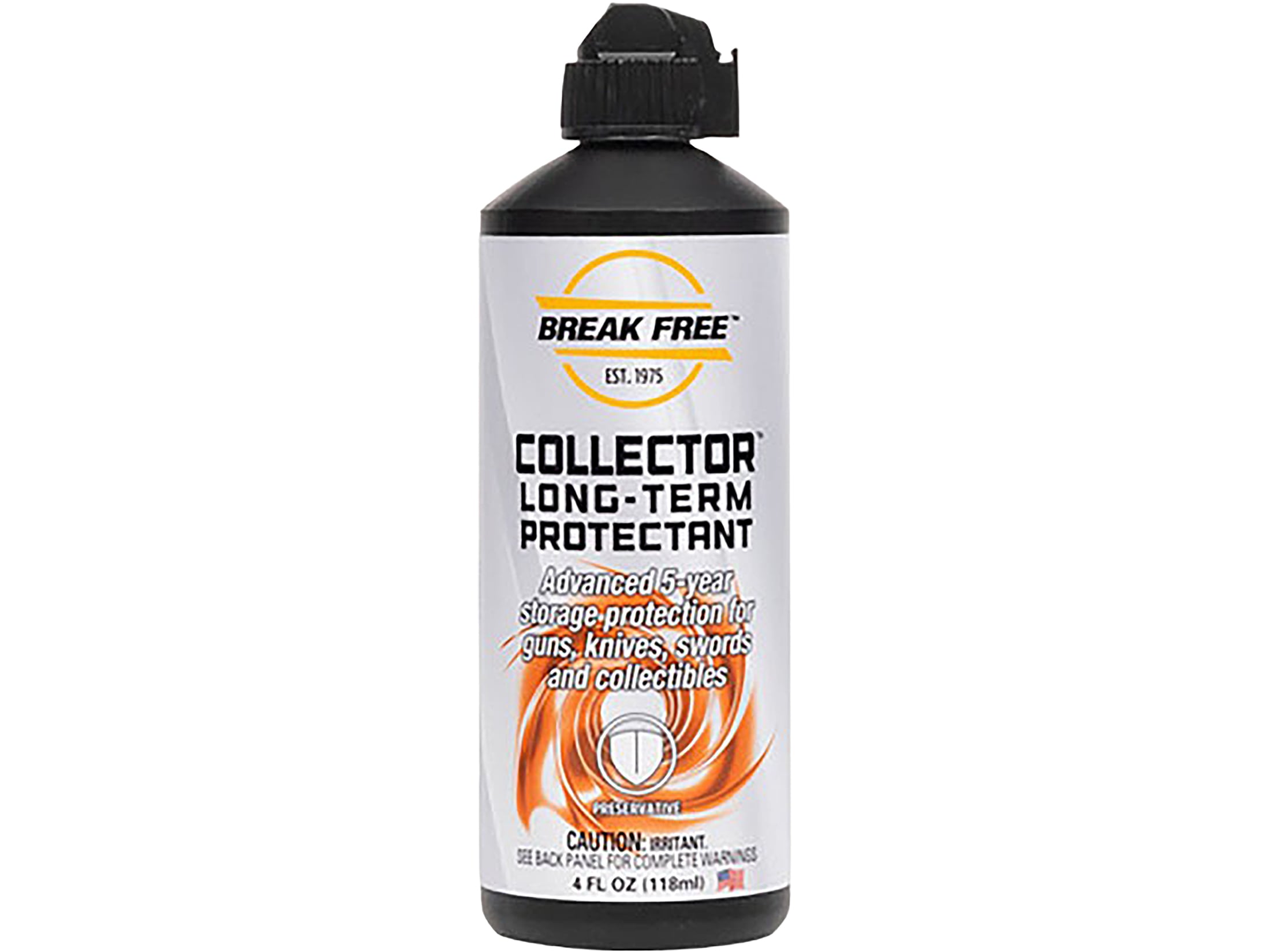-
The BladeForums.com 2024 Traditional Knife is ready to order! See this thread for details: https://www.bladeforums.com/threads/bladeforums-2024-traditional-knife.2003187/
Price is$300$250 ea (shipped within CONUS). If you live outside the US, I will contact you after your order for extra shipping charges.
Order here: https://www.bladeforums.com/help/2024-traditional/ - Order as many as you like, we have plenty.
You are using an out of date browser. It may not display this or other websites correctly.
You should upgrade or use an alternative browser.
You should upgrade or use an alternative browser.
Knife Maintenance, oils/wax?
- Thread starter bap190
- Start date
- Joined
- May 5, 2013
- Messages
- 3,618
You're going to get a million answers, and none of them are going to be "wrong".....
My personal favorite, and something I have used a lot and for a long time, is Ren. Wax.
It protects. Never had an issue, but second most important for me is that it's a true wax. Once applied, it's not greasy, no film, no residue....
My personal favorite, and something I have used a lot and for a long time, is Ren. Wax.
It protects. Never had an issue, but second most important for me is that it's a true wax. Once applied, it's not greasy, no film, no residue....
- Joined
- Jan 11, 2006
- Messages
- 1,652
I use a little CLP on mine.
- Joined
- Jan 11, 2006
- Messages
- 1,652
Yes, I was using CLP and other gun lubricants like fireclean but so runny, seemed good for the bearings but was looking to keep the blade protected, especially damascus, I have heard Ren wax a lot so I am going to have to give that a try.
I haven't used Ren wax, but perhaps I'll give it a try too.
- Joined
- Jan 11, 2006
- Messages
- 1,652
If you do 'regular' maintenance, just about any oil will do.
Mineral oil, 3-In-One, WD-40, even synthetic motor oil like Mobil One and car waxes work just fine.
Frog Lube is a highly recommended 'premium' lube.
I haven't tried Froglube on my knife but it works pretty well on my AR. My only concern with Froglube is that it is water based. I would be worried that it will become sticky when the temperatures reach below freezing. I haven't got any proof of this. Anyone else?
For stainless and near-stainless modern folders, neither. None. Nothing. Just a little lightweight machine oil on the pivot after washing with soap and water if the movement is sticky. Just keep it clean.
Non-stainless folders...if they're in regular use, nothing is really necessary. For storage, mineral oil on the pivot and blade.
Non-stainless folders...if they're in regular use, nothing is really necessary. For storage, mineral oil on the pivot and blade.
Food grade mineral oil,ikea sells it by the pint 5 dollars been using as lube and protectant
^^This, then if you need to cut food you are good to go
Boybacon
Gold Member
- Joined
- Apr 2, 2025
- Messages
- 11
This is an old thread, but I'm an old man so here's my two cents. I was a knife collector up until we had children. Once that happened, I pretty much focused my time, attention and money on the kids. Now that one is on his own, studying for his doctorate and the other one is in college, I thought I'd pick up the hobby again. Before I put my collection away, I used various oils on the blades (3-in-1, machine oil, sewing machine oil, bicycle chain oil, etc.). What I found was that the over the 25 year storage time, the oil dried up. I even found that some of my carbon Damascus blades had corrosion. So, I spent a couple of days removing dried oil (not easy, not fun), cleaning the blades and applying a thin coat of Renaissance Wax (aka Ren Wax). While I do not plan on letting my knives sit that long again without attention, I am happy with the performance of the wax so far. If you go with the wax, please use a very thin coat. Very thin. Once it dries (and it does flash dry rather quickly), you have to polish off the excess. If there's a thicker layer, it takes some time and effort to get all of the excess off.
jjg6319
Gold Member
- Joined
- Dec 19, 2011
- Messages
- 963
I use Ren Wax and Break Free collector oil as it has a MIL SPEC basis is suppose to last a long time. I also use the oil for my firearms so it has a dual purpose for me.

 www.midwayusa.com
www.midwayusa.com

Break Free Collector Rust Prevention 4oz Liquid
Developed to protect firearms for up to five years in storage, Break-Free Collector exceeds stringent military specifications. Recommended for the...
Last edited:
Mick Boardman
Platinum Member
- Joined
- Jul 15, 2020
- Messages
- 2,969
Ballistol....... Use it on everything, even Boo-Boo's... ......Food safe smells like licorice, black licorice!!!
......Food safe smells like licorice, black licorice!!!
Leather, wood, metal, aka Guns and.knives. ........
........

 ballistol.com
ballistol.com
Great info on the history of it....
Leather, wood, metal, aka Guns and.knives.

About Ballistol
Since 1904, Ballistol has defeated rust, friction and corrosion. Ballistol is the world's most useful and 100% eco-friendly multi-purpose oil. Shop now.
Great info on the history of it....
- Joined
- Jun 29, 1999
- Messages
- 9,938
Vaseline is an excellent rust protectant, and food safe as well. (FWIW, I usually use BreakFree CLP for lube and protectant.)
- Joined
- Jan 25, 2022
- Messages
- 119
I've been using Blade Wax. I haven't been using it long (1 yr.)but I do like the look and feel. Really makes those knives look cared for.
- Joined
- Mar 8, 2008
- Messages
- 26,080
I'm biased, but I use my own.
• For oil I use my Desert Whale liquid wax, which is about as light as sewing machine oil but is food safe, non-petroleum, and non-drying.
For wax it depends on if I'm using it on steel or on wood.
•On wood I use my Super Safflower wax which is food-safe and polymerizing like linseed oil is, but with microcrystalline paraffin and polyethylene wax, which is even harder than carnauba wax (and happens to be the same wax used to line milk cartons.) The safflower oil darkens wood less than linseed oil, and just as polymerizing, but doesn't yellow with age.
•On steel I use my PineUltimate formulation which is a solvent wax like Renaissance Wax is, using the same micro- and PE- waxes but with some cetyl palmitate for smooth application, and some high-grade VM&P naphtha blended with α-pinene and α-terpineol, which are both terpenoid solvent compounds found in turpentine. Those compounds are slower evaporating and raise the flash point of the naphtha for safety, while also helping to hold the matrix of the wax open as the naphtha evaporates, before evaporating themselves and leaving only the waxes behind. It's a little slower to dry than Renaissance Wax is but ends up fantastically hard and buffs clear, though it will feel tacky when the naphtha is evaporated but the terpenes have yet to evaporate. It buffs up nice and bright once the terpenes clear, and their pleasant pine-like scent is the indicator of if any is left behind or not.
• For oil I use my Desert Whale liquid wax, which is about as light as sewing machine oil but is food safe, non-petroleum, and non-drying.
For wax it depends on if I'm using it on steel or on wood.
•On wood I use my Super Safflower wax which is food-safe and polymerizing like linseed oil is, but with microcrystalline paraffin and polyethylene wax, which is even harder than carnauba wax (and happens to be the same wax used to line milk cartons.) The safflower oil darkens wood less than linseed oil, and just as polymerizing, but doesn't yellow with age.
•On steel I use my PineUltimate formulation which is a solvent wax like Renaissance Wax is, using the same micro- and PE- waxes but with some cetyl palmitate for smooth application, and some high-grade VM&P naphtha blended with α-pinene and α-terpineol, which are both terpenoid solvent compounds found in turpentine. Those compounds are slower evaporating and raise the flash point of the naphtha for safety, while also helping to hold the matrix of the wax open as the naphtha evaporates, before evaporating themselves and leaving only the waxes behind. It's a little slower to dry than Renaissance Wax is but ends up fantastically hard and buffs clear, though it will feel tacky when the naphtha is evaporated but the terpenes have yet to evaporate. It buffs up nice and bright once the terpenes clear, and their pleasant pine-like scent is the indicator of if any is left behind or not.
Wow. I just checked out your website. What does a wax like your PineUltimate do exactly? Will it completely protect a tool steel from corrosion? Does it hold up to abrasion during cutting of soft materials? I waxed a couple blades with pure Carnauba wax but it was a hassle - had to heat the blade first and the wax is extremely hard, so buffing was difficult.I'm biased, but I use my own.
• For oil I use my Desert Whale liquid wax, which is about as light as sewing machine oil but is food safe, non-petroleum, and non-drying.
For wax it depends on if I'm using it on steel or on wood.
•On wood I use my Super Safflower wax which is food-safe and polymerizing like linseed oil is, but with microcrystalline paraffin and polyethylene wax, which is even harder than carnauba wax (and happens to be the same wax used to line milk cartons.) The safflower oil darkens wood less than linseed oil, and just as polymerizing, but doesn't yellow with age.
•On steel I use my PineUltimate formulation which is a solvent wax like Renaissance Wax is, using the same micro- and PE- waxes but with some cetyl palmitate for smooth application, and some high-grade VM&P naphtha blended with α-pinene and α-terpineol, which are both terpenoid solvent compounds found in turpentine. Those compounds are slower evaporating and raise the flash point of the naphtha for safety, while also helping to hold the matrix of the wax open as the naphtha evaporates, before evaporating themselves and leaving only the waxes behind. It's a little slower to dry than Renaissance Wax is but ends up fantastically hard and buffs clear, though it will feel tacky when the naphtha is evaporated but the terpenes have yet to evaporate. It buffs up nice and bright once the terpenes clear, and their pleasant pine-like scent is the indicator of if any is left behind or not.
- Joined
- Mar 8, 2008
- Messages
- 26,080
All wax will wear in use but the wear points aren't where protection is most needed--the low points where the wear doesn't occur are! Use will keep the wear points clean. However, the polyethylene wax in PineUltimate is exceptionally hard and durable and wears slower than other common wax finishes. Because it's a solvent-based wax, it's kept soft by the solvents and made smooth-spreading by the cetyl palmitate, which is a hard waxy solid and room temperature but is used chiefly in cosmetic products for improving the "slip" of creams and lotions without making them greasy. The main reason polyethylene wax isn't used in more polishes is mostly that it's a bit of a pain to work with--it has a VERY high melting temperature and only becomes soluble to aliphatic and aromatic solvents when those solvents are heated! once dissolved it also has the tendency to recrystallize and separate out, which is another thing that the cetyl palmitate helps with, along with the α-terpineol.Wow. I just checked out your website. What does a wax like your PineUltimate do exactly? Will it completely protect a tool steel from corrosion? Does it hold up to abrasion during cutting of soft materials? I waxed a couple blades with pure Carnauba wax but it was a hassle - had to heat the blade first and the wax is extremely hard, so buffing was difficult.

